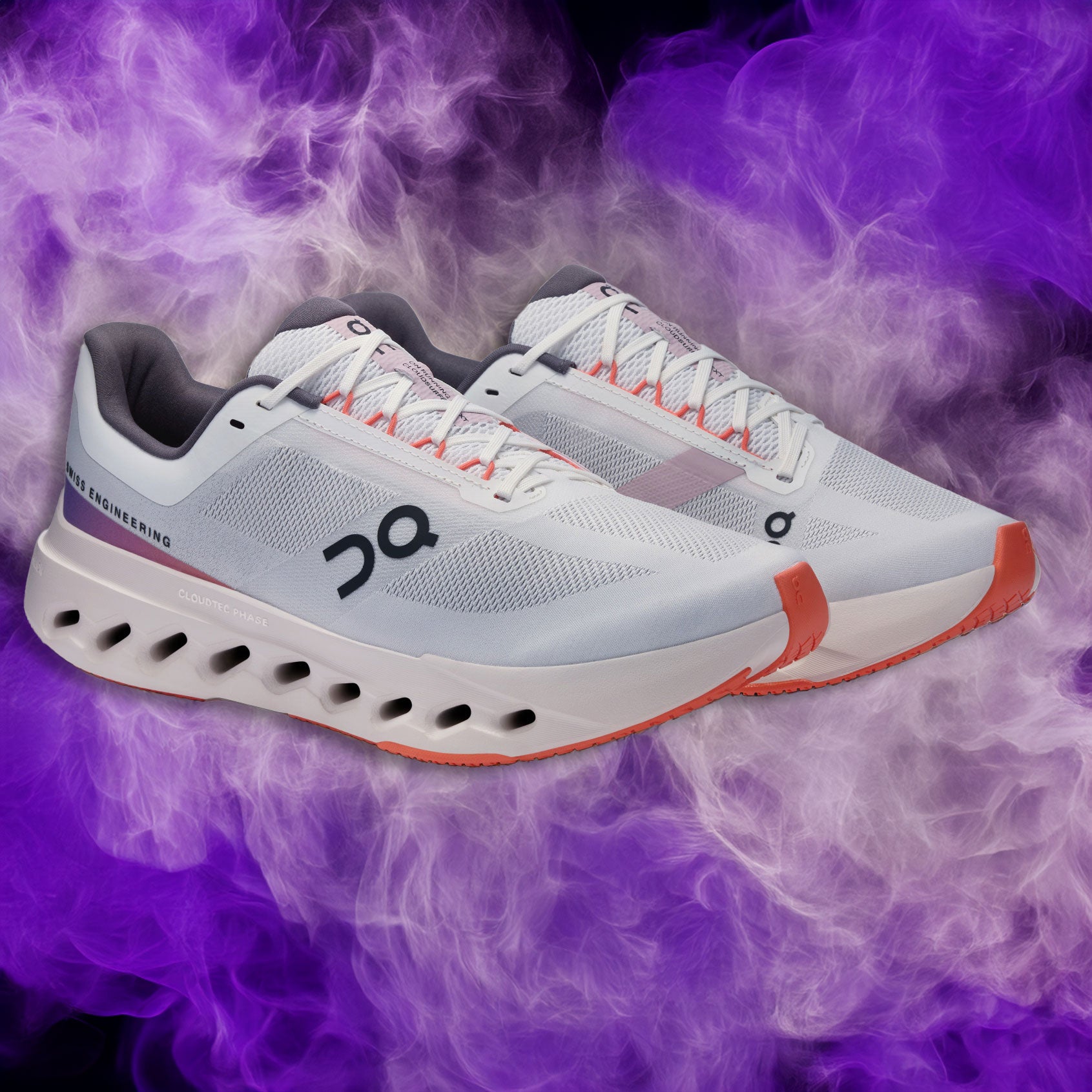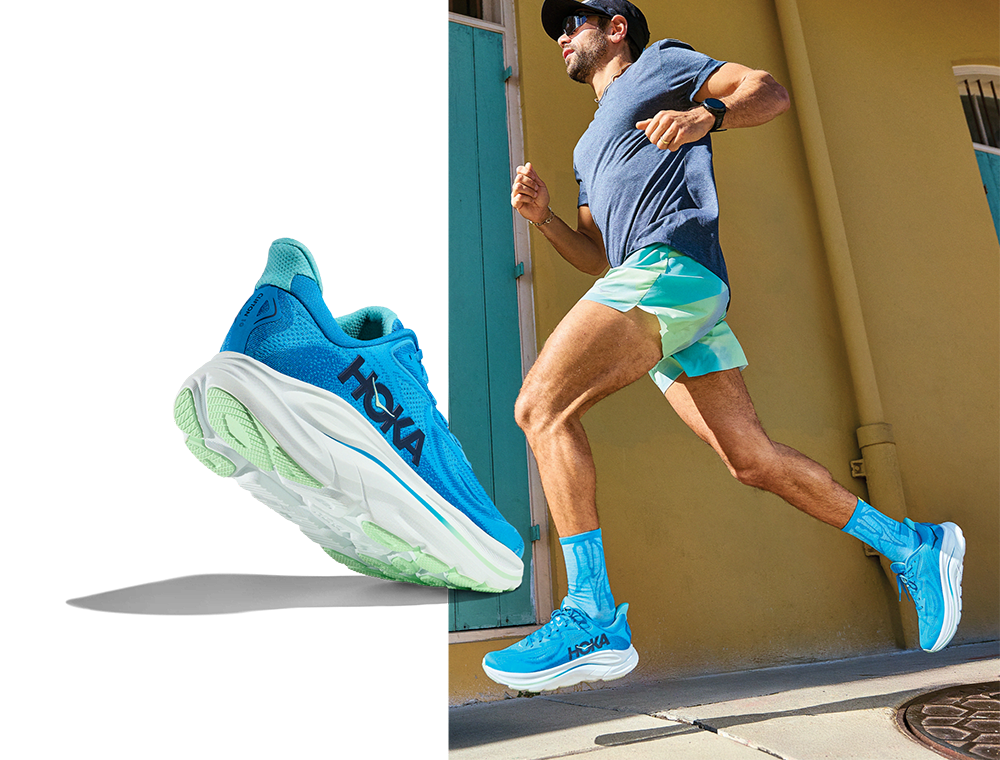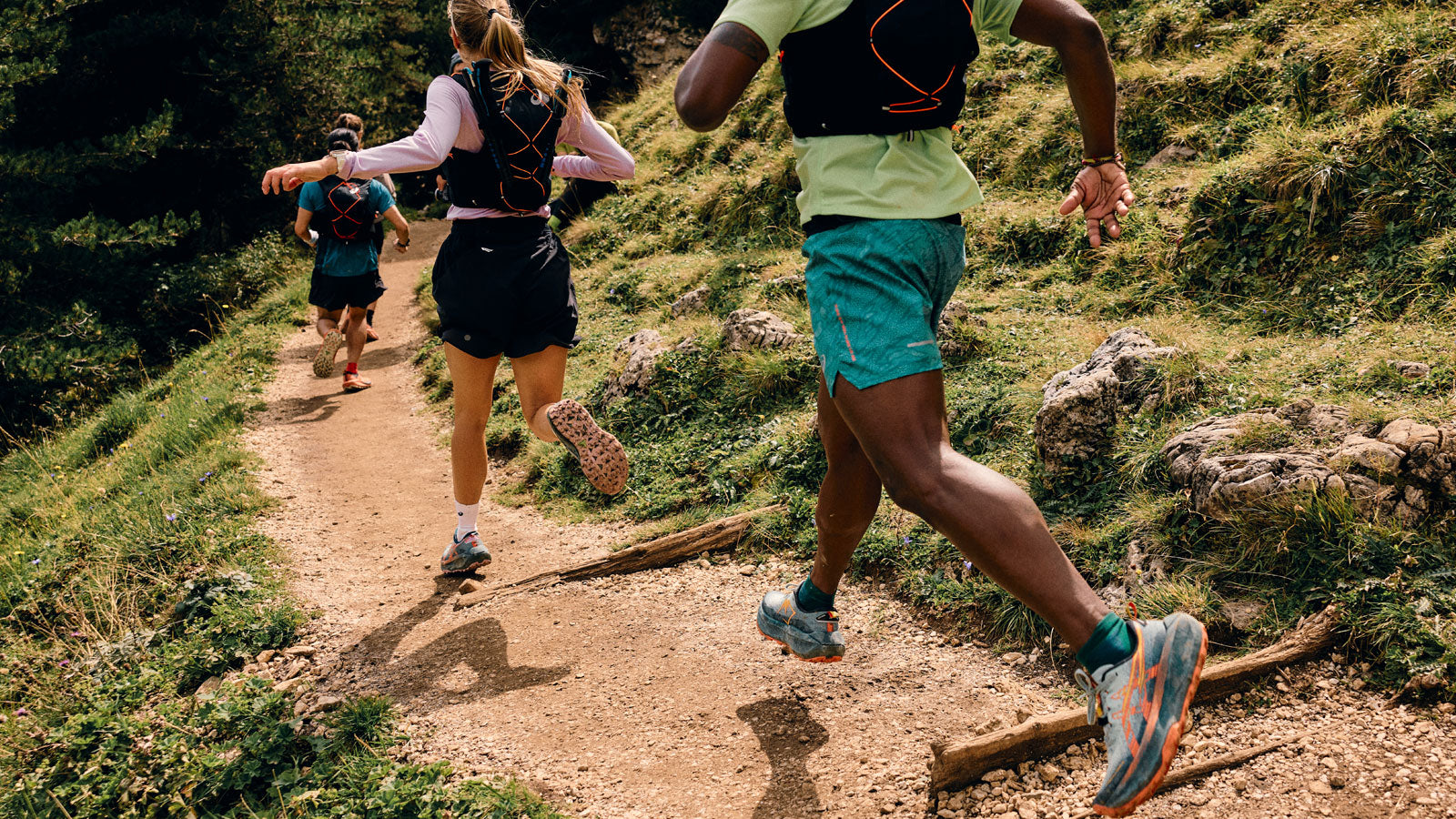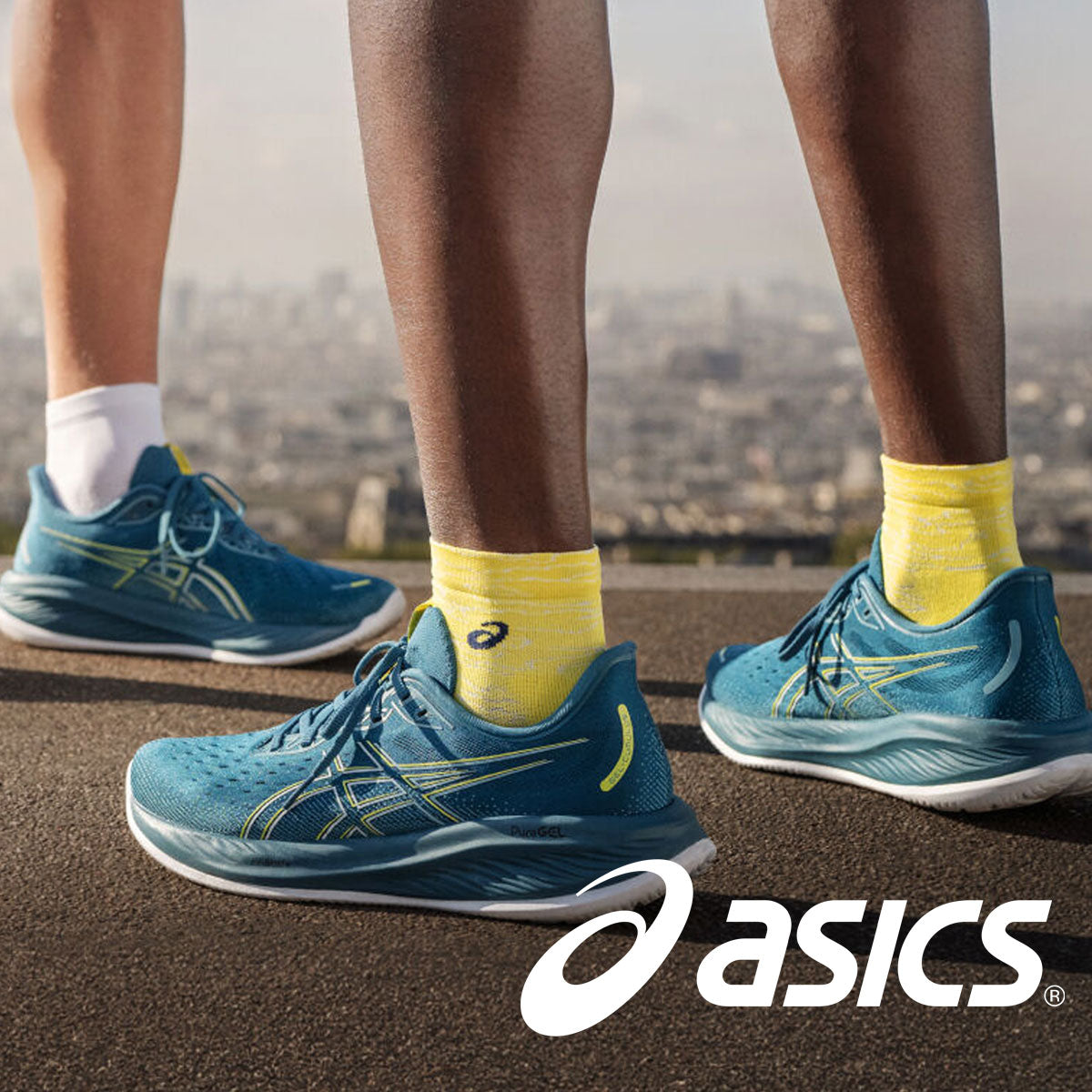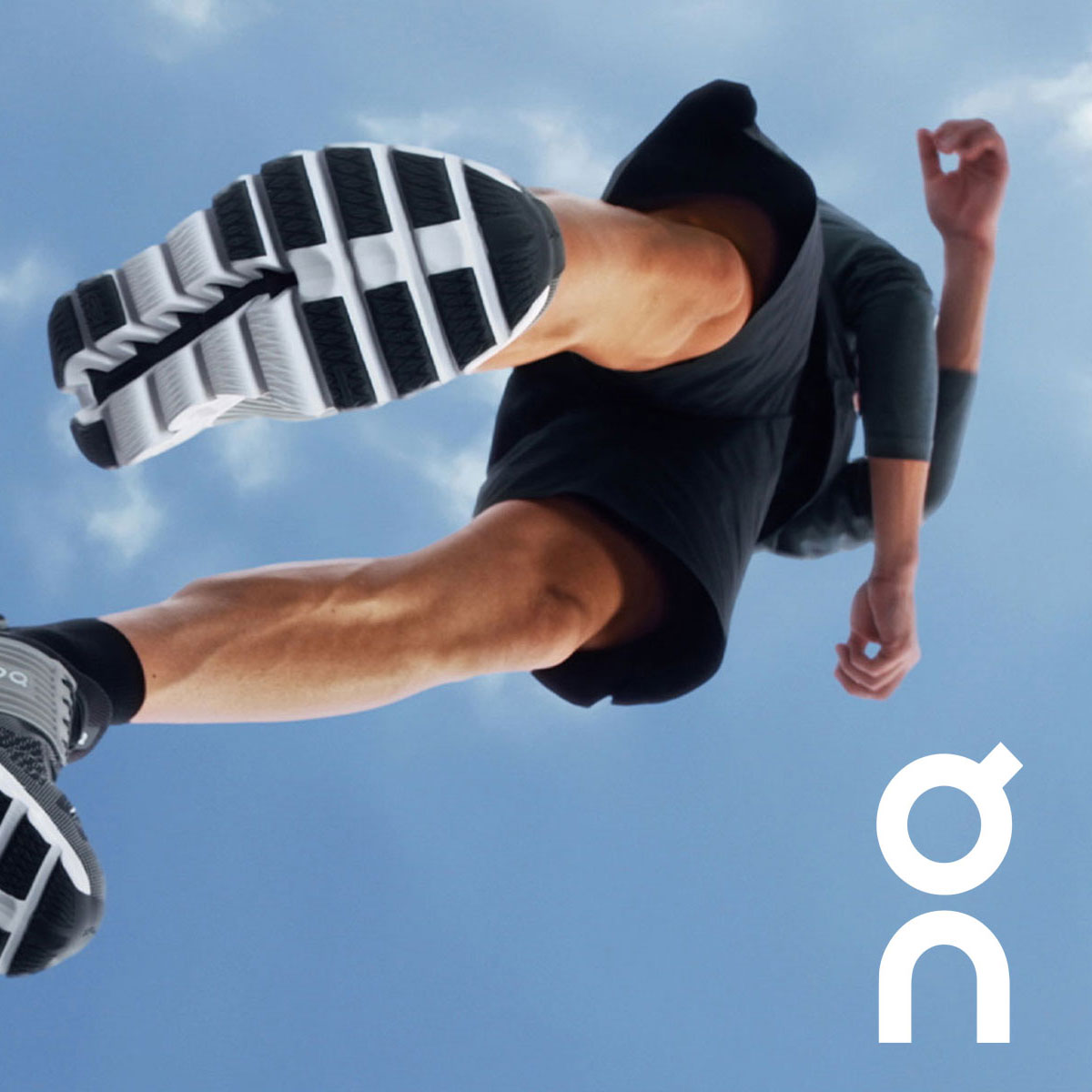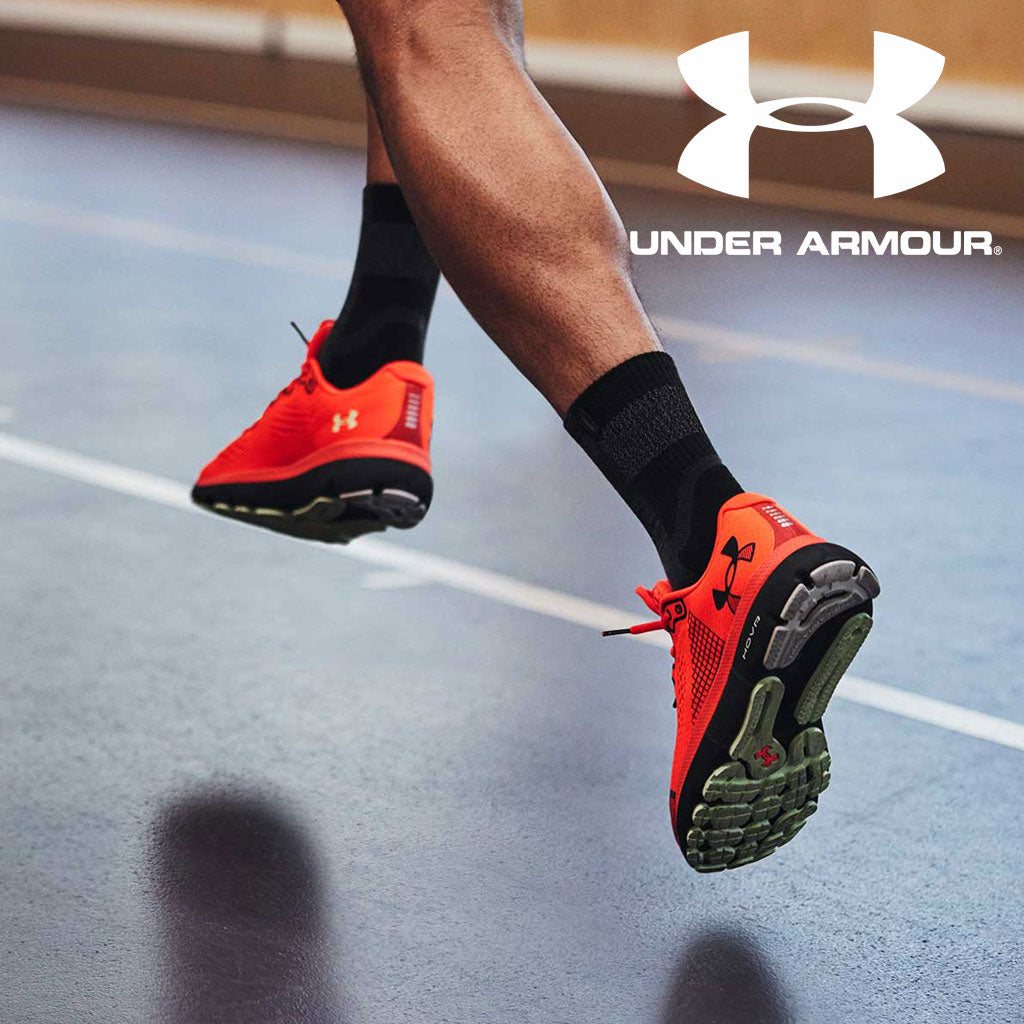Understanding your foot type.
Research shows that around 4 in 5 runners risk injury in shoes that don't suit their running style.
Understanding how your feet move and land will help you find shoes with the right type of support for you.
One of the keywords you'll see coming up again and again when it comes to your running style is pronation. So what is pronation in the foot, why does it matter, what are the different types of pronation and how can you be sure you're choosing the right shoes for you? Find out more in our pronation guide below.
What is pronation?
Pronation refers to the way your foot rolls inward for impact distribution upon landing. It's part of the natural movement of the human body but it differs from person to person. As your foot strikes the ground it rolls inward to absorb the shock. As it does this the arch of your foot supports, on average, three times your body weight. People who roll inward too much or not enough can experience running injuries due to less effective shock absorption - which is around 60% of runners.There are three main pronation types. Finding yours is the first step towards finding the right running shoes.
Underpronation

Also known as supination, underpronation means you land on the outside of the heel with minimal rolling, meaning your lower leg/ankle absorbs the majority of the impact. Runners with underpronation running types are more likely to have high arches.
To avoid underpronation and supination, opting for a shoe with maximal cushioning is likely to help mitigate some of the impact of your foot.
Neutral

If you have neutral pronation in running, this means that you land on the outside of the heel and then roll inwards to distribute impact and weight more evenly across the foot. This style of running is less likely to cause injuries as the shock is spread and less strain is placed on small parts of the foot and leg.
Overpronation

If you land on the outside of the heel and roll inwards to place weight on the inside of the foot, you’re likely to have overpronation when running and walking. Runners with flatter feet or low arches are more likely to overpronate and have overpronation wear on shoes.
If you overpronate it is crucial that you find suitable running trainers. Often shoes with added stability will help prevent your foot from rolling too far inward, mitigating the chance of discomfort and injury.
How to determine your pronation type
The best way of learning more about your foot type is through gait analysis, where video footage of your run is analyzed by an expert.
The good news is there are a few quick and easy methods to determine your pronation style.
Wear patterns won't provide the full picture, but they can give clues about the impact of your running style. This can give you an idea of where you may need extra support and cushioning in your running shoes.


